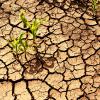
IIASA, the European Commission’s Joint Research Centre (JRC), and the Population Division of the United Nations Department of Economic and Social Affairs (UNDESA) have joined forces to conduct a survey among world experts in demography to better understand the future of the world population and its impact on various global trends.
Many global trends including economic, environmental, social, and geopolitical changes, depend on the future of the world population. Effectively assessing the future world population is therefore key to better responding to future societal challenges. Current long-term global population projections are based on a variety of methodologies and assumptions employed by leading demography institutions and yield varied results in terms of projected population size and structure – in particular for projections for the second half of the 21st century.
The survey invites experts to express their opinion on the consequences of demographic change for climate change, environmental sustainability, and the economy as well as the role of population policies to address them. It is aimed at the main international associations in population studies and the results will be made available in a dedicated report in September 2023.
“We urgently need to reflect on the ingredients that go into making population projections. We owe this to the users and in particular to the policymakers who will use the projections to inform their decisions. This survey will help us to do just that,” says IIASA Population and Just Societies Program Director, Anne Goujon.
If you want to have more details on this initiative or if you are an expert in demography and would like to take part in the survey, please contact: EC-kcmd@ec.europa.eu
Adapted from an announcement first shared on the European Commission website. Read the original text here.
Further information
https://knowledge4policy.ec.europa.eu/news/global-survey-drivers-consequences-demographic-change_en
News

14 June 2024
IIASA Leadership visits Washington DC

05 June 2024
The 2024 State of CDR Report: Scaling up CO2 removal to meet Paris Targets

25 April 2024
